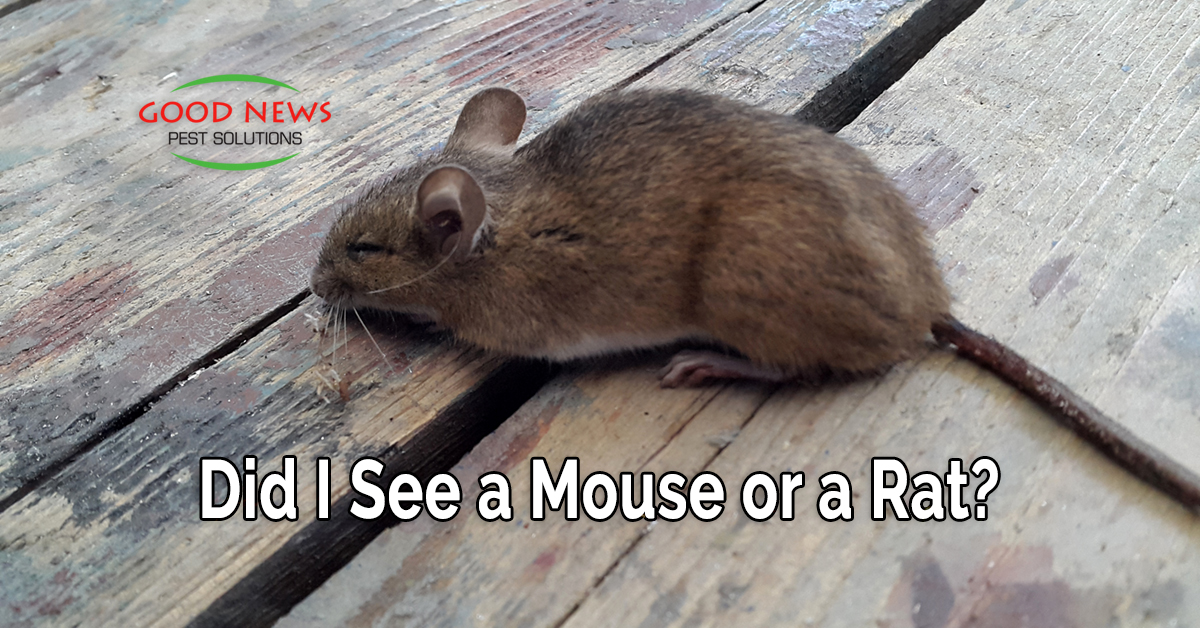
Did I See a Mouse or a Rat?
One of the sillier scenes in the classic film The Princess Bride happens when Buttercup and Westley enter the Fire Swamp. Buttercup asks Westley, “What about the ROUS’s?” To which he replies, “Rodents of Unusual Size? I don’t think they exist.” And, of course, he’s immediately attacked by one. Which produces a big laugh, in part, because it is what most people anticipated – a giant rat.
It might surprise you to learn that there are more than 2000 species of rodents – everything from gerbils and guinea pigs to beavers, porcupines, and the truest rodent of all, well the largest, the capybara. These gentle animals are about twice the size of beavers and their ancestors could grow to the size of a bear and weigh half a ton! And while they’re native to South America, small groups of capybaras do wander around the Sunshine State.
Rodentia Drive
Rodents are best known, of course, for their teeth. Their incisors grow constantly and have a hard enamel layer on the front. Unlike other mammals, they don’t have canines or molars. And because their teeth are always growing they have to keep them in check by gnawing food or other materials. For beavers, it’s wood. For squirrels, it’s the acorns they’re often dropping.
Rodents are found practically all over the globe – unless you’re in New Zealand. And most, but not all, have some sort of brown fur – some shorter, some longer than others. Many rodents also have similarly shaped ears and whiskers of some kind.
Now, you’d notice if a 100-pound capybara was trying to sneak into your house. But when it comes to smaller rodents, once you discover them you might have some trouble telling them apart. Of course, we’re talking about rats and mice.
Home Invaders
The easiest way to tell a rat from a mouse is its size. While there are some smaller rats, most dwarf their cousin’s size – approximately twice as long and large as the typical mouse. Another significant difference is that rats have slightly shorter, scaly, hairless tails, while mouse tails are long – sometimes as long as the rest of the mouse – and covered in soft hair. Mice have longer ears as well.
Neither one is a good sign in your house, but rats are significantly worse. They’re both omnivores – they can and do eat everything, which includes your walls, furniture, and any random snacks they find. While mice reproduce in larger numbers, they live brief lives. Meanwhile, rats live longer and do a lot more damage in a short time. And they’re also more aggressive. Both species are nocturnal, but mice are more likely to scurry, while a rat may stare you down, at least at first.
Regardless of which rodents you discover in your home, the treatment is the same – call an expert. Traps may work, especially for mice, but you don’t know how many babies are waiting in the wings to take their parent’s place. Rats are more suspicious and neophobic (scared of anything new) and won’t be curious enough to trigger the trap in many instances.
The good news is Good News Pest Solutions offers a comprehensive rodent solution. We’ll exclude all known entry points, as well as sealing roof vents where many of our new construction displaced rodents find a way in. Once we’re sure the house is excised of rodents with bi-weekly trapping, we vacuum accessible droppings, then apply a complete deodorizing, sanitizing viricide to all attic surfaces. If you’ve got a rodent problem, don’t delay, give us a call today!
« Back to Blog
Proudly Serving
Sun City Center, Ruskin, Palmetto, Parrish, Ellenton, Bradenton, Anna Maria, Holmes Beach, Bradenton Beach, Longboat Key, Lakewood Ranch, University Park, Myakka City, Sarasota, Siesta Key, Osprey, Nokomis, Casey Key, Venice, Englewood, North Port, Port Charlotte, Punta Gorda, Arcadia
Things You Can Do
Pay Your Bill Online
Leave Us a Review
Request a Free* Termite Inspection
Stop Mosquito Bites
Get Rid of Rodents
Get a Termite Damage Warranty
Get Pest Control for Your Attic
Get Pest Control for Your Business Request Prayer
Corporate Address
1080 Enterprise Court, Ste A
North Venice, FL 34275
Call Now: (941) 412-9610
Text: (941) 412-9610
Fax: (941) 412-0080
